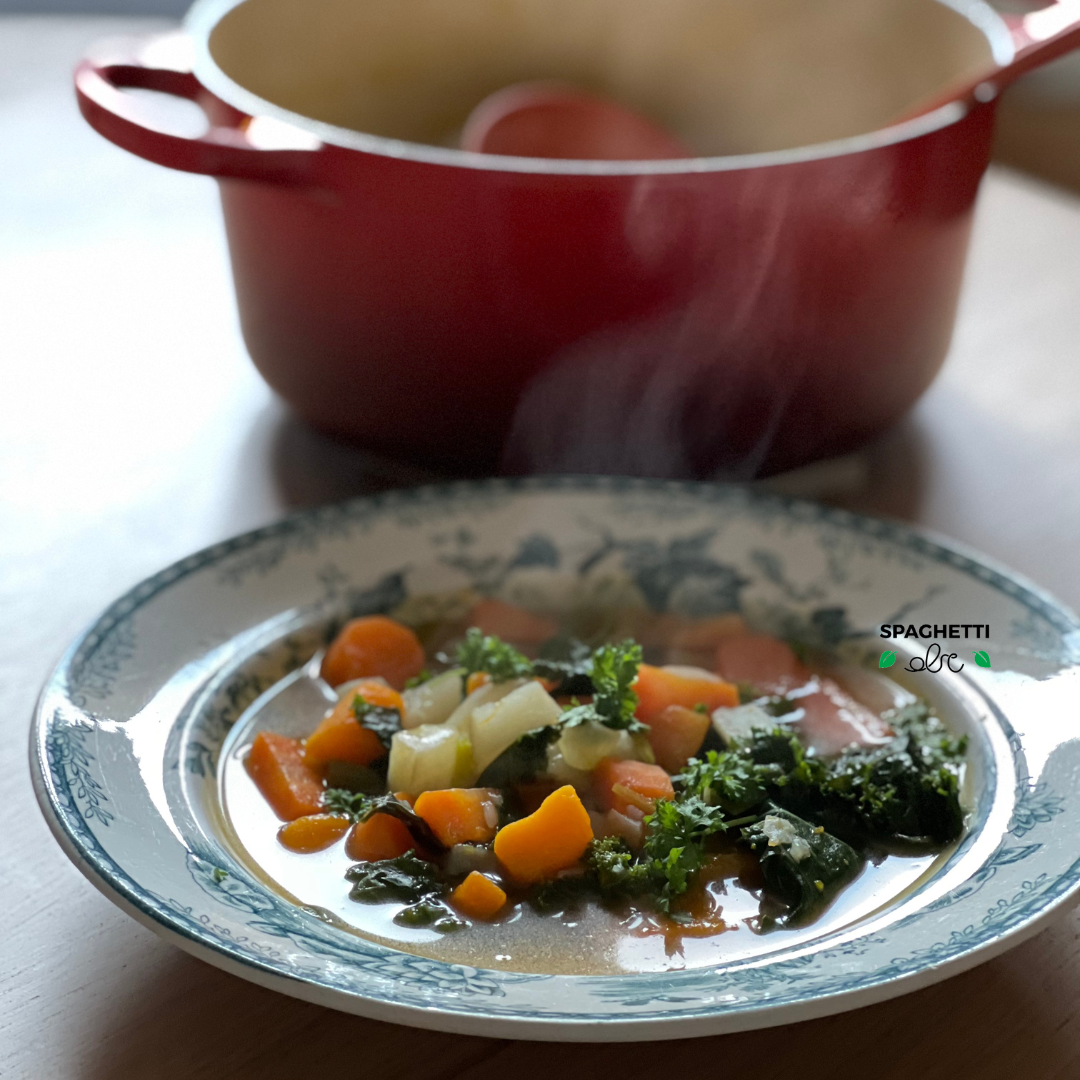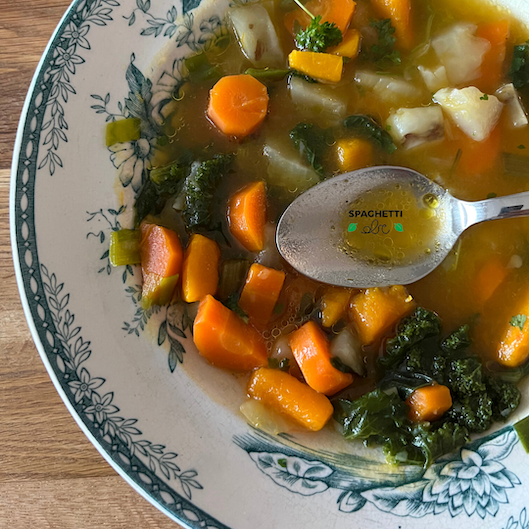Minestrone – the golden rules

Minestrone: one, none and a hundred thousand (to quote the novel of the writer Pirandello).
The thick vegetable Italian soup has many shapes as many are the households in Italy: it changes according to the region and the season, and comes in many variations, making it impossible to find a single recipe.
A pillar of “cucina povera” (poor cuisine), minestrone was prepared with the vegetables available in the kitchen at the time.
The name “minestrone” comes from the latin word “menestrare” (to administer) because the soup was served by the head of the family.
It is prepared with wide variety of vegetables (potatoes, carrots, green leaves), with or without legumes (borlotti beans, lentils). With or without pasta or rice. With our without cheese to grate and maybe pancetta.
To succeed in the preparation, you need to follow precise rules.
1. Cooking vegetables and legumes. They vary according to season and are heterogeneous. Therefore, you must pay attention to cooking times and cook them not all at once. So start with those that need longer cooking time (tubers, legumes for example) and add last those that need less time (e.g. leaves of spinach, chard).
2. Dosage of seasonings: they should be neither too abundant nor too scarce but should be in harmonious balance and, above all, there should be no one flavor prevailing over the other.
In this post you will find my version of minestrone, prepared just with vegetables, here in Sweden at the end of the Autumn season. Enjoy!

Ingredients for 2 persons
200 g of squash
120 g of Jerusalem artichoke
3 medium carrots
100 g of Swiss chards
100 g of green kale
1 medium onion
extravirgin olive oil
salt
fresh parsley
Time: 40 minutes
Let’s cook!
Cut the squash, the Jerusalem artichoke and the carrots in cubes of the same size (4×4 cm).
Separate the leaves of the chards from the stems. Cut them all but keep the stems separated from the leaves. Do the same for the green kale.
Cut the onion and sauté in a large pot with a small spoon of olive oil.
Add the Jerusalem artichokes, the carrots and let them cook for 5 minutes. Then add the squash and the stems of the leaves, mix and let cook for a couple of minutes.
Now add half later of boiling water (or vegetable stock) and cook until the vegetables are al dente.
As last thing, add the leaves of chards and kale and cook for 10 more minutes.
The minestrone is ready! Serve it with raw olive oil, chopped parsley and, if you want, grated Parmigiano Reggiano.
NB: if you prepare minestrone with with legumes, check their cooking time on the pack and add them at the right time. Chickpeas and beans needs to be soaked the night before and will need at least 40 minutes to cook, so add them at the beginning. If you are using cooked legumes, add them at the end.
Pasta and rice need to be added according the cooking time indicated on the pack: take a look.
Did you like my recipe? Subscribe to my monthly newsletter and get every month 4 new Italian recipes, tested during my cooking classes, using seasonal ingredients.
You will also receive:
- the e-book I’ve created for you about the must-have Italian ingredients to create the magic in your kitchen
- fact sheets on the ingredients of Italian cuisine, how to recognize the quality ones and how to use them
- updates on all my events, tastings and coming cooking classes.
